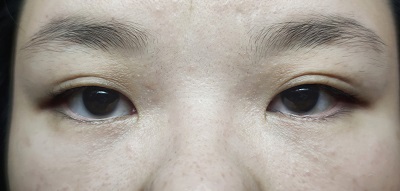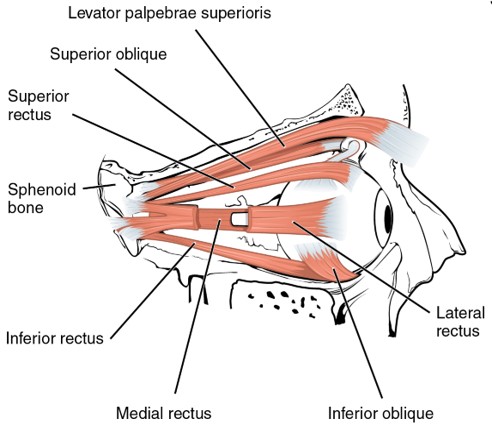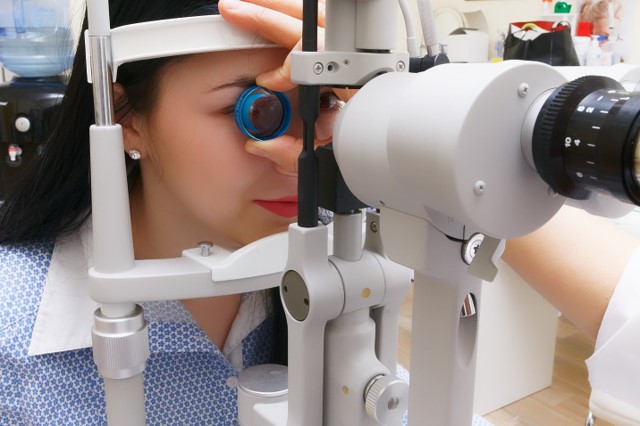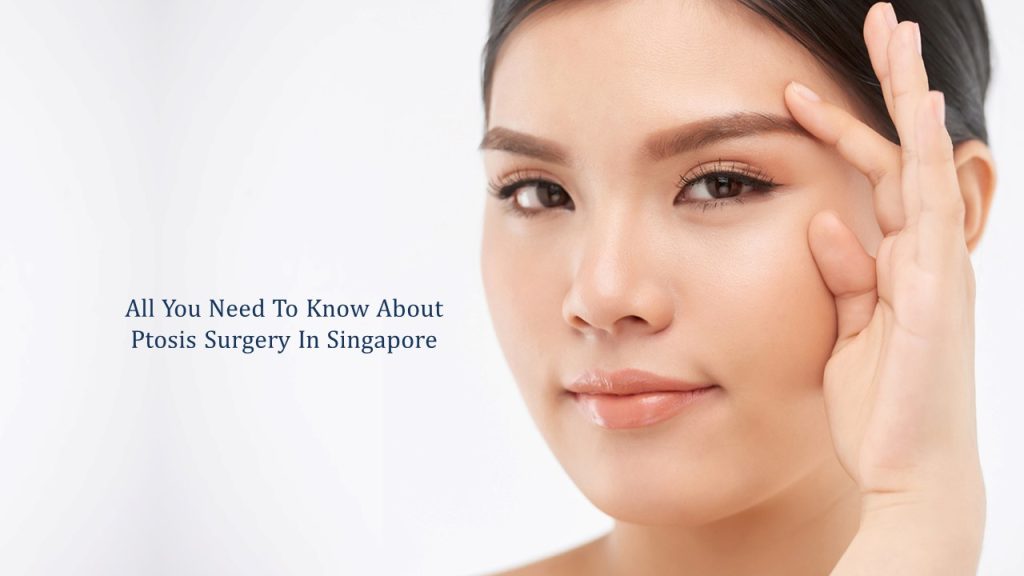Each time we look in the mirror, the first thing that we may notice is our eyes. Sometimes we may see some subtle differences between each eyes. One thing that some of us may notice is that one eyelid may droop a little more than the other. Now a little droop may be nothing to worry about, but beyond a certain point where the eyelid droops significantly, you may want to consider seeing a plastic surgeon for Ptosis surgery.
What Is Ptosis?

Ptosis is known as the drooping of the upper eyelid. Many people may tend to notice it when it either interferes with their sight or when they look tired all the time despite having sufficient rest. There are many causes as to why your eyelid would droop, but it falls into one of two main categories. It could be congenital, meaning that you’ve had it since you were born or it could be acquired, meaning you got it because of some other cause.
There are some other causes of ptosis but to better understand it, let’s take a look at the science behind it.
The Muscles Behind Your Eyelids

This diagram shows the various muscles inside and outside our eyes that enable us to move our eyes and blink. The Levator palpebrae superioris muscle is the main muscle that keeps our eyelids open. The action of us actually blinking or closing our eyes involves the relaxation of this muscle which allows the eyelid to glide over our eye and cover it. It is when our Levator palpebrae superioris muscle contracts(activates) that our eyelids open to give us clear vision. This muscle is fixed to the margin of our upper eyelid by a special sheet of fibrous tissue known as the levator aponeurosis, which helps pull up the eyelid when the levator palpebrae superioris muscle contracts. All these muscles, including the ones mentioned below, are delicately hidden underneath the skin surrounding the eye.
All muscles are innervated by nerves and our eyelid muscles are no exception. Specifically, the Levator palpebrae superioris muscle is innervated by the oculomotor nerve, which is 3rd cranial nerve of the twelve main cranial nerves.
There are two other muscles involved in keeping our eye open are the superior rectus muscle, and the superior tarsus muscle. These muscles are controlled by the oculomotor nerve and a sympathetic nerve respectively.
The Causes Of Ptosis
Now that we roughly know the muscles and structures involved with blinking and keeping our eyes open, let’s discuss the causes of ptosis.
Anything can go wrong with any of the structures that we discussed above.
- The muscle (levator palpebrae superioris or other muscles) may not function properly and so this type of ptosis is called myogenic ptosis.
- If there is something wrong with the nerves that supply the muscles keeping your eyelids open, it is called neurogenic ptosis.
- If the aponeurosis that connects the muscle to the eyelid is defective due to aging, it is called aponeurotic ptosis.
- If you have suffered a blow or an injury to the eye that leads the eyelid to droop, this is called traumatic ptosis.
These are among the common causes for ptosis and it is of utmost importance that your doctor identifies the cause of the ptosis as this will affect how it is treated.
I Might Have Ptosis, What Should I Do?
If you have a visual problem or a cosmetic issue with the drooping of your eyelids, then it is best to go seek some medical advice. Unless you experienced a trauma, it is unlikely that you can diagnose what the cause for the ptosis may be. That is why you must consult a plastic surgeon who will carry out some investigations and be able to tell you exactly what type of ptosis you may have. There are many plastic surgeons that you can consult in hospitals or clinics all over Singapore, who will be happy to answer any questions or doubts you may have on the matter.
What Kind Of Tests Will I Have To Undergo?

Upon visiting plastic surgeon with a complaint of ptosis, the doctor will generally examine your eyes wholly to make sure that there aren’t any other hidden or concurrent issues. To assess the severity of the ptosis, they will take some measurements with the help of specific eye test such as the Marginal Reflex Distance (MRD). These essentially measure the length between the pupil and the margins of the eyelid, and the palpebral fissure height is the total length of the opening of the eye between the eyelids through the pupil. The test will help to determine the severity of the ptosis and if it is classified as a medical condition, the treatment fees may be eligible for insurance claims.

Ptosis Treatment
The standard for treating ptosis in Singapore is surgery and this same standard is adopted all over the world. If for any reason you wish to delay the surgery or are unable to have the surgery, you may be recommended to use something called ptosis crutches, which are plastic contraptions that are fixed to glasses that will hold your eyelids up to compensate for the ptosis of either both or a single eye. This method though effective is not a solution and it is useful in the long term to consider surgery as a more permanent fix.
Unlike other diseases, because ptosis takes place due to some malfunction of the structures of the eyelids, it may not heal on its own. That is why plastic surgeons recommend upper eyelid surgery as a fix for most causes of ptosis. Keep in mind though, that all forms of ptosis may not be able to be fixed by surgery and that there are some instances of neurogenic ptosis, where doctors will prescribe you some medicine as ptosis treatment.
More About Ptosis Surgery

Ptosis surgery is called blepharoplasty and it is the general term used for correcting defects, deformities, and disfigurations of the eyelids either for functional or cosmetic reasons or both.
The surgery involves putting the patient under sedation and performing the necessary corrections to your eyelids. Towards the end of the procedure, the sedation will be reduced and the patient will be woken up to check if the eyelid height is adequately corrected.
Once the procedure is done, the surgical site will be sutured and an ointment will be applied. Over the next few days to weeks, your doctor will require you to come into the hospital to examine the surgical site and keep an eye out for any potential complications, also, to check that your eyelids are recovering well.
The changes brought about by ptosis surgery are usually visible 2 weeks after and will continue to improve. Final results can be reviewed 3 to 6 months after the procedure.
Costs And Insurance Coverage Of Ptosis Surgery In Singapore
Depending on the severity of the ptosis, certain ptosis surgeries qualify for coverage by both Medisave and other insurance claims. The main factor that determines whether you qualify for this coverage is the Margin Reflex Distance test, which measures the distance between the pupil and the upper eyelid. The costs of ptosis surgery would be anywhere between $5000 to around $16,000 depending on the severity of the ptosis and its causative factor.
Conclusion
Ptosis surgery may seem daunting, but if you are suffering from very severe to moderate levels of ptosis, it is quite advantageous to seek advice and medical care before it worsens further. Correcting ptosis will bring about huge vision-related and cosmetic benefits and will significantly improve your quality of life in the long run.
If you are unsure as to who to approach you could speak to people who have done the surgery who have experienced good results or get a recommendation from your or family doctor. They will point you in the right direction. Consulting an experienced plastic surgeon is important as they will be able to cater the surgery to minimize scarring and will try to maintain and improve the cosmetic appearance of the eye.
About Dream Aesthetics and Plastic Surgery
Bespoke surgical for cosmetic or medical reasons is what Dream covers to bring out the beauty in every individual. Going beyond the aesthetics and working on physical anomalies are what we value the most in leading our patients to cherish self-improvement and confident lifestyles.
Derived from Associate Professor Vincent Yeow’s long-standing experience performing plastic surgery in Singapore, our treatment plans deliver physical remodelling in our patients’ favour. One of the notable remodellings is droopy eyelid correction. The ptosis surgery used for treatment eventually fixes drooping eyelids, improves vision and enhances appearance.
Most importantly, as a trustworthy plastic surgery and aesthetic clinic, we treasure positive and natural outcomes for each individual. We will ensure to deliver the beauty refinement of your dream without compromising your safety and privacy.







